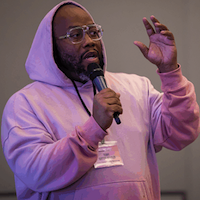In the Down Economy, more consumer packaged goods (CPG) companies are turning online to connect with consumers and offer discounts. Many studies have shown that digital offerings build brands, drive awareness and ultimately increase sales. Yet, many CPG advertisers still continue to believe that segmenting and targeting online audiences is a costly step, and one they can’t afford.
This is simply untrue. Technology such as rich media expands the scope of how consumers can engage with an ad online. For example, online ads can expand when a consumer moves the cursor over them, revealing more information about the products. Videos and questionnaires can be incorporated into campaign experiences; interactive demonstrations can be included; and coupons can be downloaded.
According to results of a study conducted earlier this year by Pointroll, a leading rich media company, the average interaction rate of one ad unit is 6.77% and average time spent is 14.52 seconds. That means that approximately one out of every 15 people who see an ad engage with it for an average of 15 seconds, which creates substantial one-on-one time with consumers. A productive online campaign can produce thousands and thousands of hours of engagement.
Once a CPG company assesses its current business objectives — for example, to gain penetration, defend against a competitive attack, or launch a new product — then the company can think objectively about whether its current media plans work or not. They may find that online advertising offers the biggest bang for their buck.
Tools such as Yahoo and Nielsen’s Consumer Direct leverage offline sales and consumer purchasing behavior. Once the advertiser identifies the target audience, Nielsen builds the predictive model of the households that fit a specific description to help find relevant consumers. Yahoo then takes the model and serves ads to the households that are most like the advertiser’s target.
Marketers can also measure the number of goods that actually moved off the shelves at grocery stores, via control and exposed groups created by Nielsen to track the success of the campaigns. Both groups have similar demographics and prior purchase history, as well as the same opportunity to see traditional advertising; the only difference between the two is the online advertising piece. The purchase behavior is then measured to determine if the exposed group purchased more products during and after the campaign.
More than 250 consumer CPG targeted campaigns have been created with this system. The average sales increase between the control group and exposed group is upwards of 30%. Analysis also found that, on average, CPG brands have experienced an ROI of nearly $3 for every media dollar spent.
Once the correct audience is identified through targeting tools, a compelling message can be delivered. Messaging is arguably more important to CPG advertisers than other advertisers simply because their products are purchased almost exclusively offline.
Mitch Spolan is vice president of North American field sales for Yahoo.



